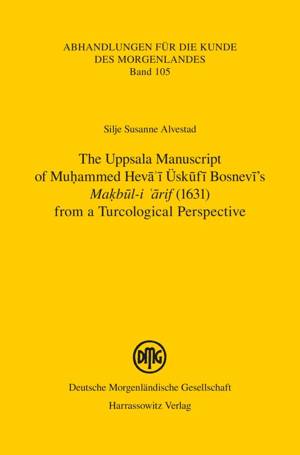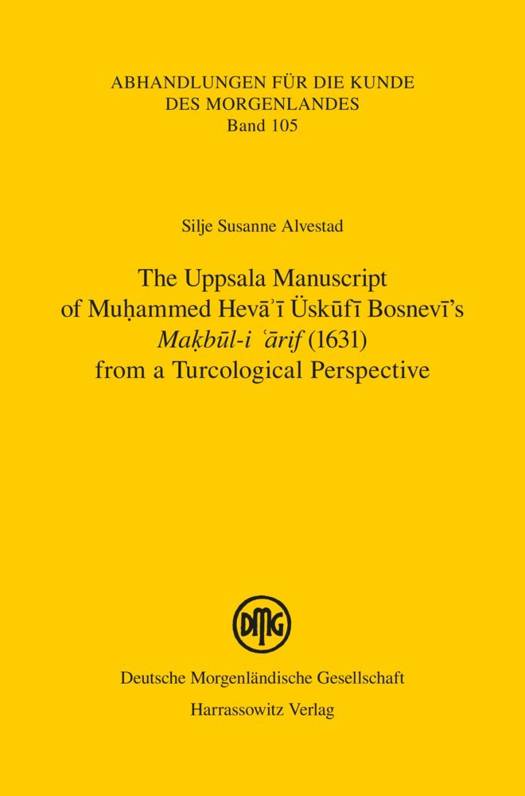
- Afhalen na 1 uur in een winkel met voorraad
- Gratis thuislevering in België vanaf € 30
- Ruim aanbod met 7 miljoen producten
- Afhalen na 1 uur in een winkel met voorraad
- Gratis thuislevering in België vanaf € 30
- Ruim aanbod met 7 miljoen producten
Zoeken
The Uppsala Manuscript of Muhammed Heva'i Uskufi Bosnevi's Makbul-I 'Arif (1631) from a Turcological Perspective
Transliteration, Transcription, and an English Translation
Silje Susanne Alvestad
€ 109,95
+ 219 punten
Omschrijving
The object of study in this book is the Uppsala manuscript, O. nova 546, of Muhammed Heva'i Uskufi Bosnevi's literary work Makbul-i 'arif from 1631. The manuscript, handwritten in Ottoman script, reached the University Library in Uppsala from Cairo in 1924. Makbul-i 'arif is frequently referred to as the first known Bosnian-Turkish dictionary, but this label is misleading. First, the work consists of three parts - a long and sophisticated foreword and an afterword in addition to the dictionary part. Besides, the part of the work that is the cause of the unfortunate label is not a 'dictionary' in the modern sense of the word. Among other things, it is versified, dialogue-oriented, and split into chapters according to topic. The versified glossary is the only part where we find Bosnian words; approximately 650. The main motivation behind this book is the fact that Makbul-i 'arif has received little attention from a turcological perspective. Despite the fact that Makbul-i 'arif is a Turkish, or Ottoman Turkish literary work of art, the vast majority of researchers concerned with the work examine it from a Bosnian cultural and/or linguistic perspective. It is time Makbul-i 'arif receives its fair share of attention from a turcological point of view too. The contributions of this book are thus as follows. First, a grapheme-by-grapheme transliteration of the entire Uppsala manuscript is provided. Second, a transcription of the manuscript is given and, third, an English translation of the entire Makbul-i 'arif is provided. None of these enterprises has so far been undertaken. The English translation may serve as a starting point to make Makbul-i 'arif available to a wider audience.
Specificaties
Betrokkenen
- Auteur(s):
- Uitgeverij:
Inhoud
- Aantal bladzijden:
- 164
- Taal:
- Engels
- Reeks:
- Reeksnummer:
- nr. 105
Eigenschappen
- Productcode (EAN):
- 9783447106351
- Verschijningsdatum:
- 22/06/2016
- Uitvoering:
- Paperback
- Formaat:
- Trade paperback (VS)
- Afmetingen:
- 145 mm x 216 mm
- Gewicht:
- 276 g

Alleen bij Standaard Boekhandel
+ 219 punten op je klantenkaart van Standaard Boekhandel
Beoordelingen
We publiceren alleen reviews die voldoen aan de voorwaarden voor reviews. Bekijk onze voorwaarden voor reviews.








